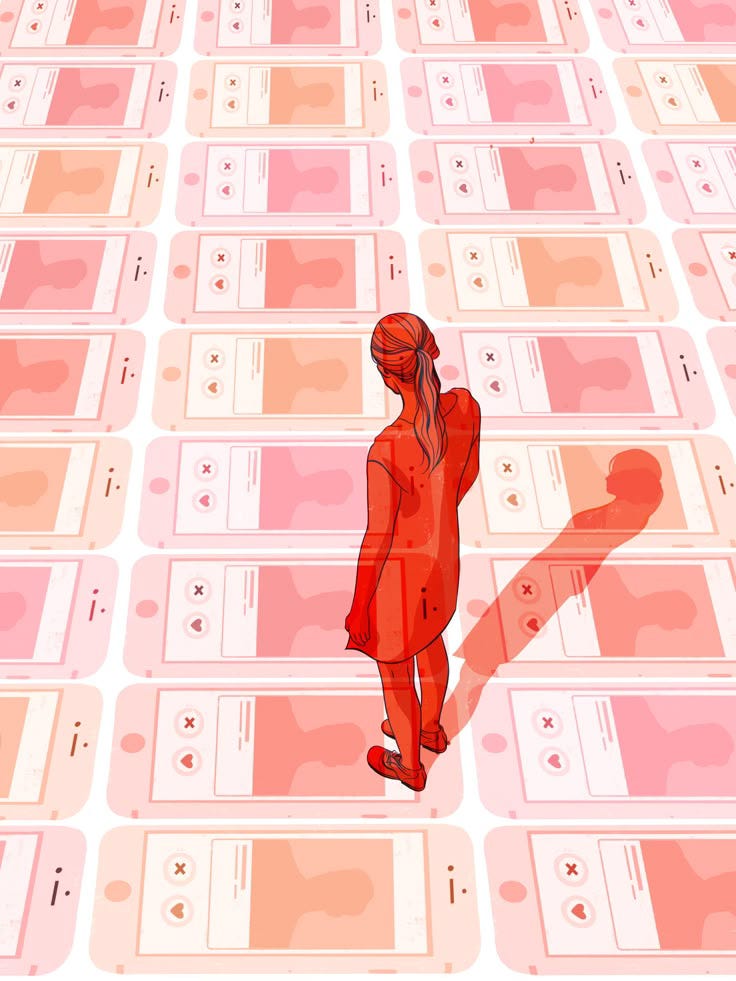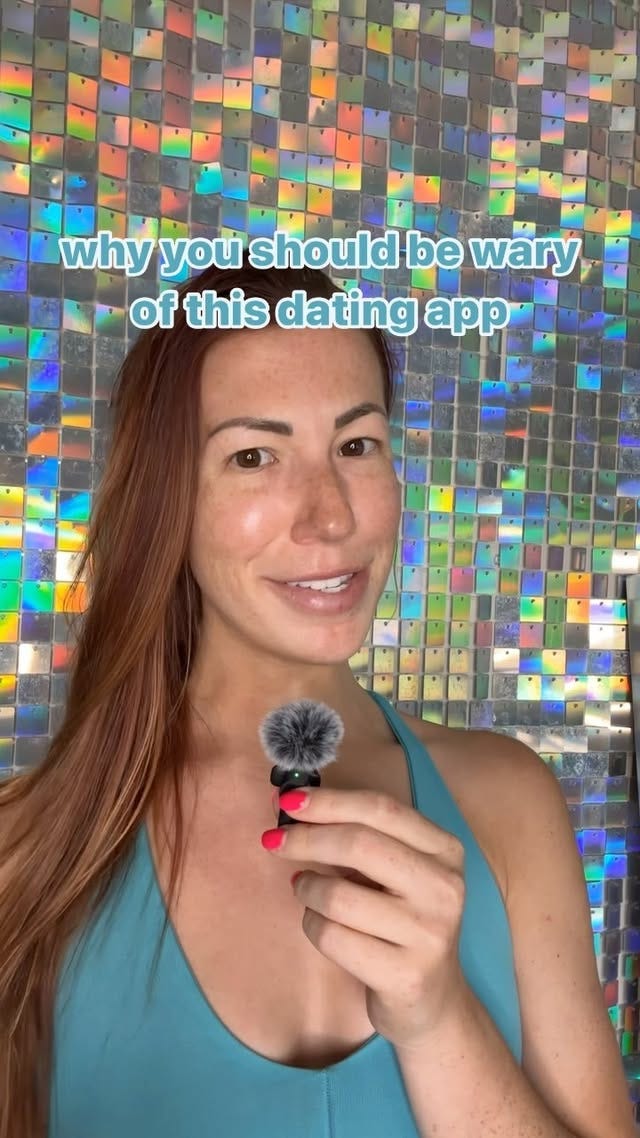Why Positive Singles Isn't the Answer for Dating with STIs
The Harsh Truth About Niche STI Dating Apps and Why They Miss the Mark
I can’t even begin to describe the rage I experienced when I opened my inbox last week to yet another inquiry from Positive Singles.
Positive Singles is a dating app that markets itself as the “#1 STD & Herpes Dating Site with 2 million positive singles.” While Positive Singles markets itself as a solution for people with sexually transmitted infections (STIs), it actually reinforces harmful stigma, monetizes fear, and fails to provide the meaningful connections or community it promises—all while charging premium prices for basic features.
My Experience with Positive Singles
For people living with an STI, I can understand how this app would quickly resonate, especially immediately following diagnosis. I’ve been there, too.
Shortly following my diagnosis and stuck in the, “I guess this is all I have now” phase of my dating destiny, I remember downloading the Positive Singles app. I registered my account. Scrolled through potential matches. Immediately got the ick and decided it was not worth continuing and deleted it.
As I scrolled, it just felt… desperate. None of the matches were people I would think to date, and I realized I was better off navigating things on my own.
I have been approached by Positive Singles and their marketing team numerous times over the years for collaborations and brand partnerships. Each time, I decline. Not because I’m bitter about my short-lived experience, but because the platform further reinforces STI stigma and minimizes people with STIs to their infection.
Why is Positive Singles so Harmful?
Positive Singles has a similar approach as people who suggest dating apps add a filter for STIs. Whether adding a filter or devoting an entire dating app to people with STIs, these companies are sending a clear message—people with STIs are expected to isolate themselves from the general dating pool. But what many people fail to realize is how this app fails not only people with STIs, but sexual health and dating more broadly.
Monetizing Stigma and Fear
A dating app for people with STIs sounds like a good idea to most because it reaffirms what they already believe about people with STIs—they should be separated and avoided. The apps work by doing the “othering” for people.
People think the most effective way to avoid STIs is to match people up by infection, when in reality, the most effective tool is communication. You can’t tell if someone has an STI just by looking at them. Many STIs come without symptoms, which is why it can actually be more effective to reduce transmission by having sex with someone who knows their STI status and how to reduce the potential for transmission.
Like other dating apps, Positive Singles needs to churn a profit somehow, which is why they offer tiered memberships. While they offer a free membership, they (of course) recommend subscribing to premium for the best opportunities.
Positive Singles’ Pricing Structure
1-Month Plan: $33.99
3-Month Plan: $23.33/month (billed as $69.99 every 3 months)
6-Month Plan: $18.33/month (billed as $109.99 every 6 months)
Unlike Hinge, which clearly differentiates between its tiers ($29.99 for Hinge+ and $49.99 for HingeX), Positive Singles offers vague benefits that fail to justify the cost. Their promises are broad, including unlimited messaging, “often receive more profile views,” access to support groups, and privacy.
I’m sorry—EVERYONE DESERVES PRIVACY! Especially on an app where you’re sharing your STI status.
The problem isn't offering services to people with STIs—it's creating walled gardens that separate them from the broader dating world and normalizing the idea that STI status should be the defining feature of someone's dating life. Positive Singles isn't problematic because it charges money; it's problematic because it charges for othering while claiming to solve a problem it actually reinforces.
Community Guidelines and Safer Sex
In my series, The State of Dating Apps, I compared and reviewed dating apps based on several factors, including their Community Guidelines. Few people take time to read terms and conditions and community guidelines (you know, those long text boxes with a check mark you have to click to use the app), but they effectively guide your user experience, and most people don’t care about them until it’s too late.
Take a look at Positive Singles’ guidelines. Let’s set aside the outdated website design for a moment and look at what the community guidelines are actually saying. They claim to “maintain a safe, respectful, and enjoyable experience,” but based on my experience and expertise, I highly doubt it’s upheld.
Apps like Hinge prioritize consent and member safety, and actually outline what to do about it. Though these guidelines are often hidden, they are there. Positive Singles immediately jumps into child exploitation and abuse laws…Important? Absolutely. But the organization makes me immediately wonder what exactly is happening on this app.
While consent and boundaries are mentioned, they are broad. It feels like someone took a template and ran it through ChatGPT for potential things that could go wrong, in addition to things that already have. From its outdated language (e.g., “escorts and prostitutes”) to broad claim to support consent and healthy relationships (without actually defining them), it feels like this was a last minute slapped on together group project.
If something goes wrong, they offer “in-app reporting tools” and email support, but only promise vague “necessary action” without specifics. Unlike Hinge and other mainstream apps that at least provide clear reporting processes, Positive Singles leaves users vulnerable with its poorly defined safety protocols.
Positive Singles’ value of consent is easily seen in their communications with me. For years I’ve asserted myself. Kindly stating we’re not a fit and to please remove me from the contact list. I’ve said no and it’s still not enough. Yet I am consistently tossed around to marketing agents—and I know I’m not the only one.
Nothing to Better Stigma
The allure of sleeping with someone else who shares your infection is, for many people, anxiety relief. From what feels like freedom of disclosure to removing anxiety of passing on their infection, it can feel like the myth of spontaneous sex is possible again.
This perceived benefit—anxiety relief from disclosure and rejection—masks the actual harm being done. The very premise reinforces that people with STIs should only date each other, which only deepens stigma rather than challenging it.
But this very thought is evidence that stigma is functioning as it should without you even realizing it. I’m not denying that the anxiety of not passing on an infection can feel life changing for many, especially people who do experience anxiety. It’s a question I receive from time-to-time and I’ve offered my advice on it. But someone sharing your infection doesn’t remove the STI conversation from the table. You’re still obligated to get tested and share your status with others.
For example, people with herpes can still get other STIs. How would you know someone’s last STI test if you don’t ask? You wouldn't.
This is how stigma works. People think only people with STIs like herpes have to share their status, when it’s really all of our obligation as sexually active people. It’s not your fault if you don’t know, but it is your responsibility when you find out.
Rather than challenging stigma, apps like Positive Singles reinforce the false binary between "clean" and "positive" people—a harmful distinction that sex educators have been fighting against for years. True destigmatization would integrate STI status as just one aspect of sexual health communication, not as the defining characteristic for who you can date.
What About Community?
When sharing my views about Positive Singles in the past, I’ve been met with some resistance. Usually it comes back to this idea of community. While Positive Singles mentions use of the app as a community, it specifically calls itself a dating website.
Some argue that while it fails as a dating app, Positive Singles offers a sense of community. I’ve met more people in the herpes community through Instagram and my blog than I ever could on Positive Singles. And now, there are even more creators, educators, and professionals providing real support (including me!).
I think it is much more valuable to find a community where you align and fit in rather than fitting yourself in the Positive Singles box. From their broad and outdated community guidelines, unclear “premier” tier offerings, clear violation of boundaries and consent, and manipulation tactics, it’s enough for me to tell you that Positive Singles is not worth what it claims to offer.
Is There an Ideal Dating App for People with STIs?
Dating apps can be flawed in many ways. When it comes to dating with STIs, the goal should be integration, education, and normalization—not perpetuating a system where people with STIs are treated as a separate category of daters.
Apps like Positive Singles only hold us back. The path forward requires building a culture that treats STIs as the common health conditions they are. In my ideal dating landscape, apps like Positive Singles would become obsolete.








